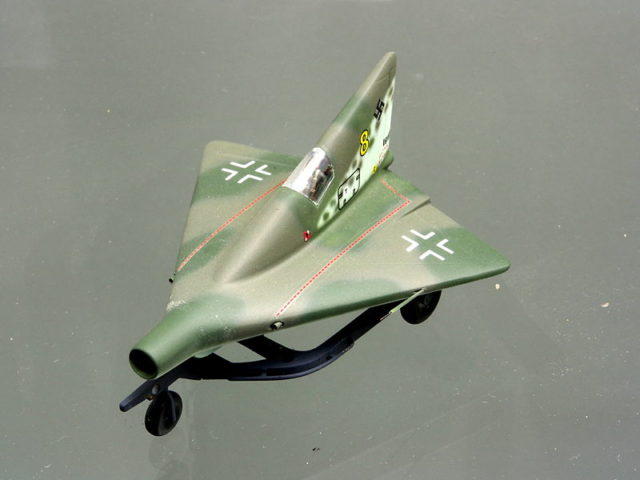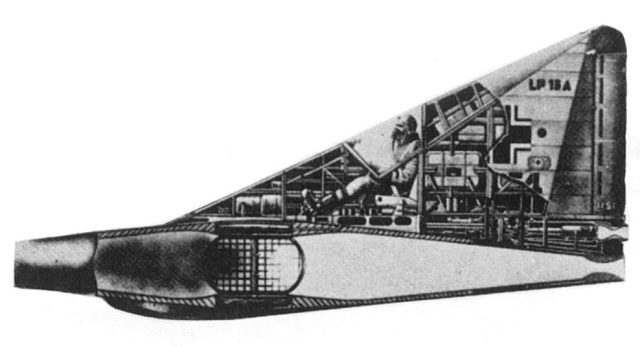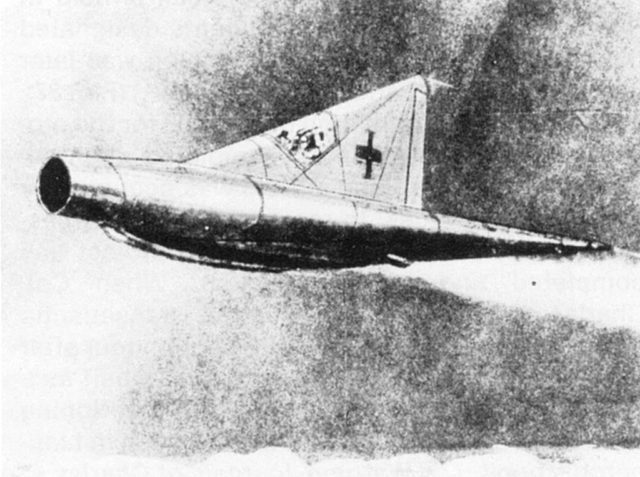While World War 2 raged on, oil began to run low and more unconventional means of fuel were needed to replace them.
The Nazis then came up with the P13a, a plane which would be powered by coal. Originally a wire mesh basket filled with coal was going to be attached behind the nose air intake, where it would then be ignited by a gas burner.
The last hope for the Luftwaffe was to put out faster and more deadly fighters; this was the only way to combat the advancing allied bombers.Fighters were easy to build and were cheap compared to the bigger planes.
Almost all the plans that were put forward for fighters followed these simple rules: Cheap, fast, fast to build and a lot of firepower; even Dr. Lippisch’s were along the same lines during the final part of the war.

This plane was never developed any further than the DM-1 test glider. After the war had ended, Lippisch began working with American air designer Convair.
With this partnership, they came up with the XF-92 which would eventually become the F-102 Delta Dagger and its successor, the F-106 Delta Dart. What if I was to tell you that the American government has classified documents that show the P13a was actually built, and was the first plane to break the sound barrier? Wouldn’t shock you at all, would it? Now, how about we speak on the P13a itself.

The P13a was a top secret plane; it was a ramjet-powered delta wing interceptor that was designed by Dr. Alexander Lippisch for the Nazis. The aircraft was supposedly never finished, but it was tested in wind tunnels and showed readings that it would perform perfect in Mach 3 speeds.
The coal that was to power the engine would be small granulates instead of large lumps so they could be controlled and burn evenly; the basket would also be altered to a mesh drum that would revolve on a vertical axis. A jet would fire into the basket once the P13a reached operating speed. Though it could not get there on its own, it would have to be shot off with a rocket, or need to be towed.
Though it could not get there on its own, it would have to be shot off with a rocket or it would need to be towed.
The air that passed through the ramjet would then be taken and mixed with clean air coming from another intake. It would then be funneled into a rear nozzle to provide the plane’s thrust. The burner and drum were built and tested in Vienna before the war ended.

No one knows what type of weaponry would have been installed on the plane, the Mk 103 cannon was too heavy so it most likely would of been two large caliber machineguns. The plane was going to be made of wood, plywood and steel tubing.
Even the DM-1 prototype had not been finished by the end of the war, but when it was captured by US forces they commanded Lippisch’s team to complete it. Once completed it was taken back to the US, where they tested it and received positive results.
The lessons learned from it were later incorporated into NASA’s research aircraft of the 1950’s and beyond.
